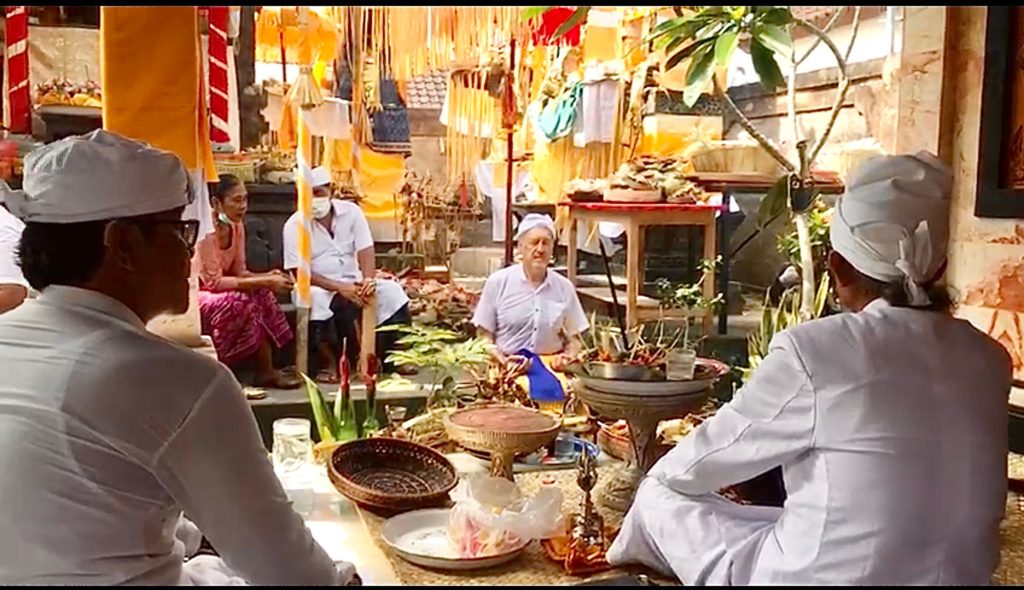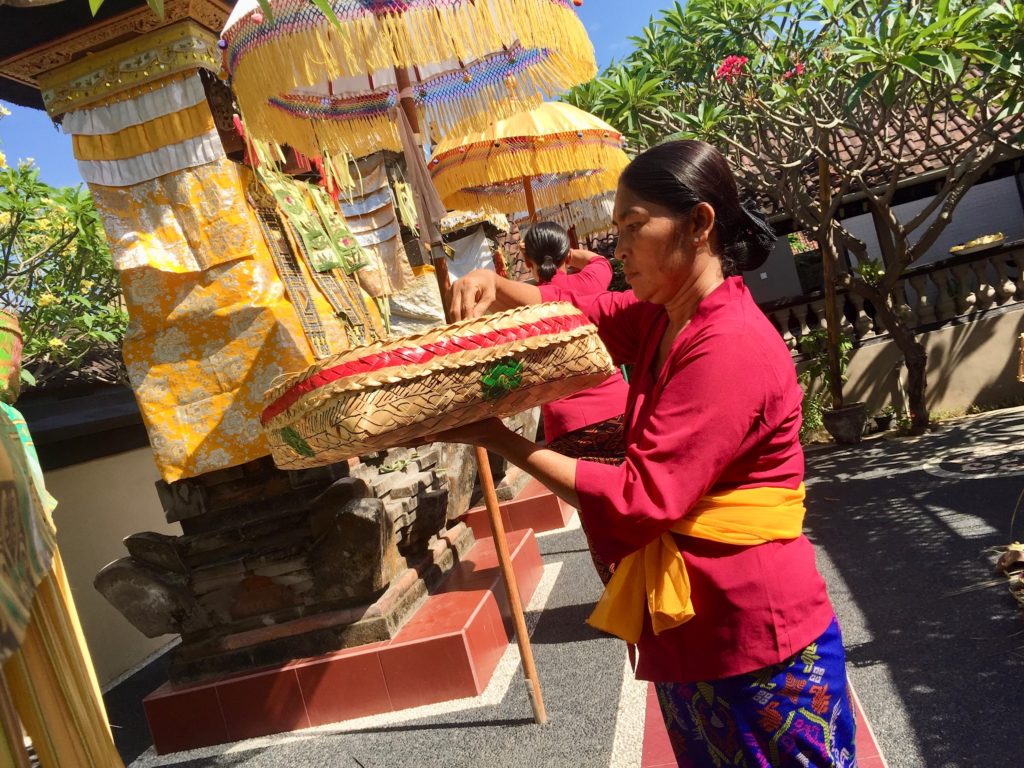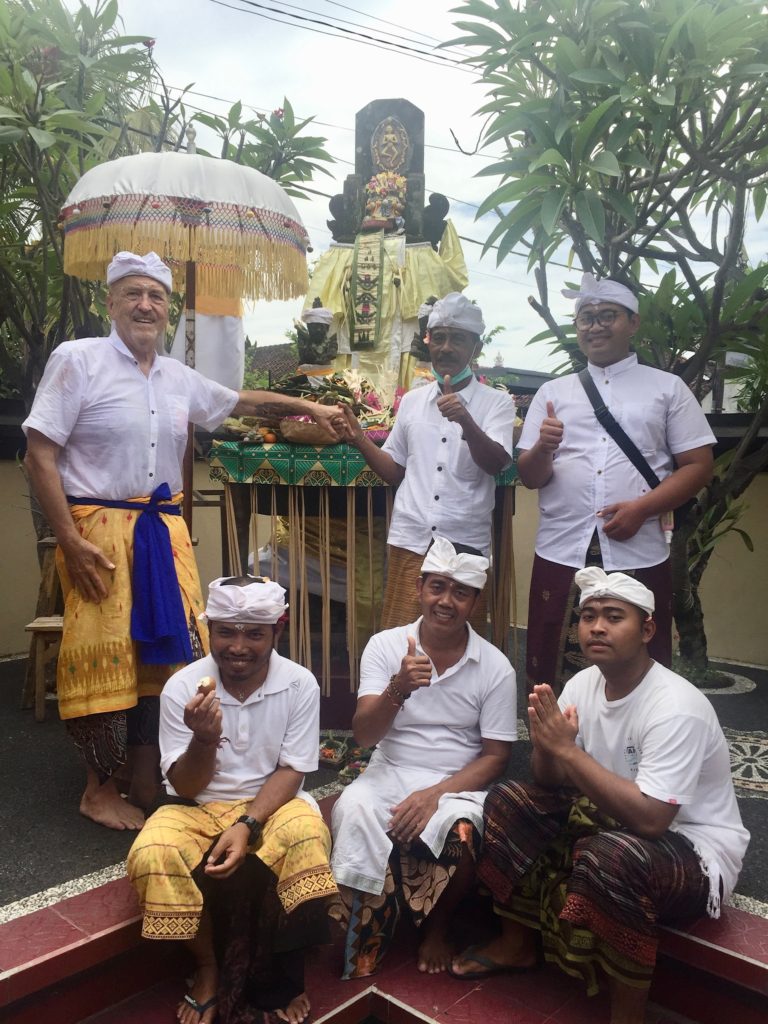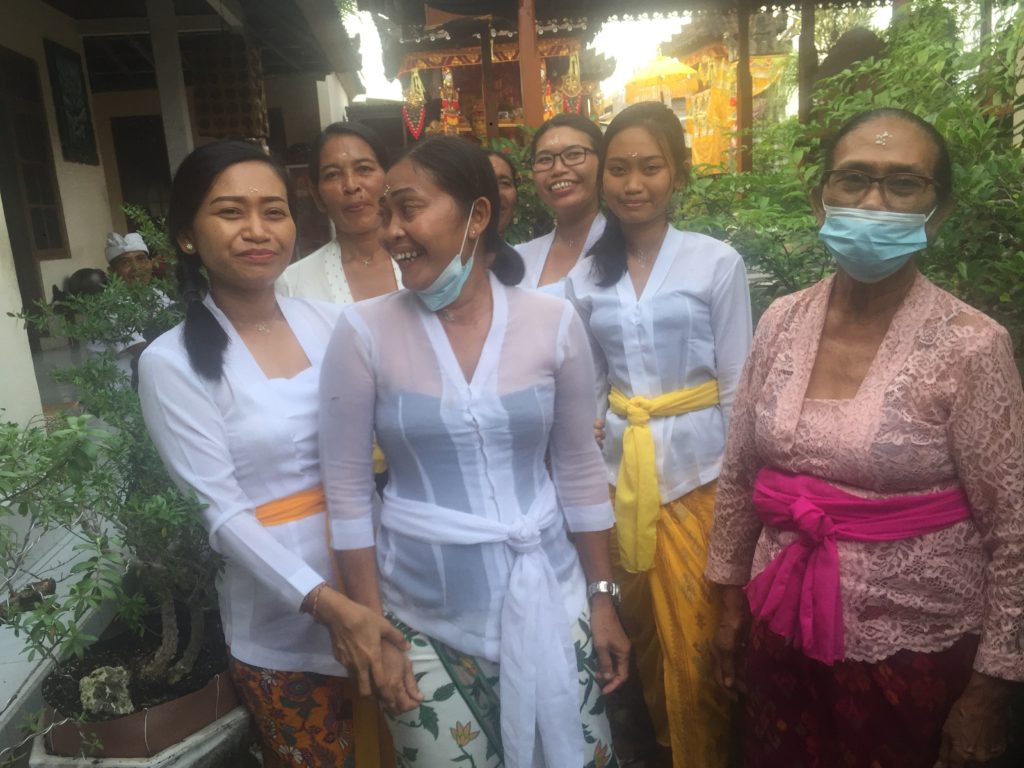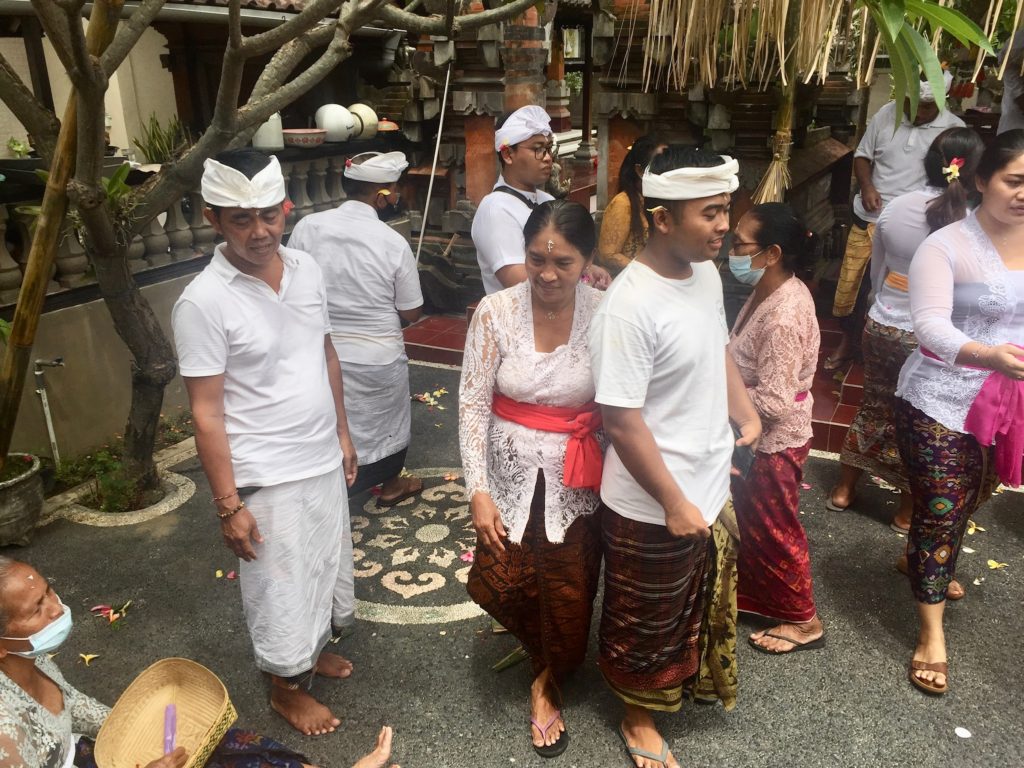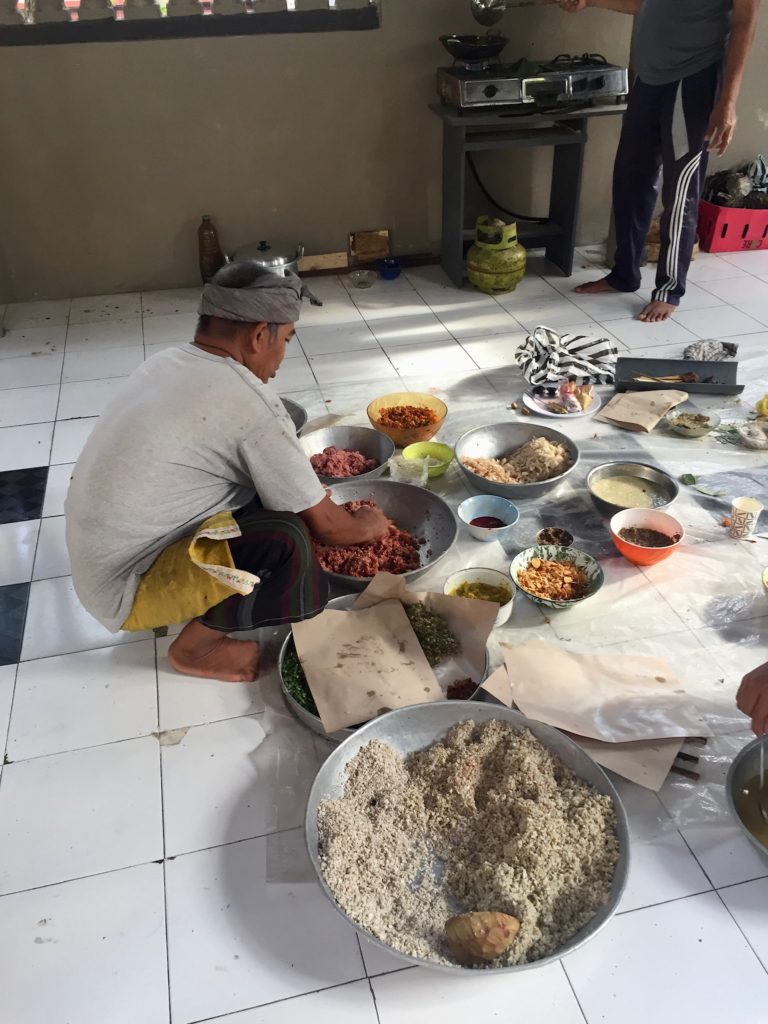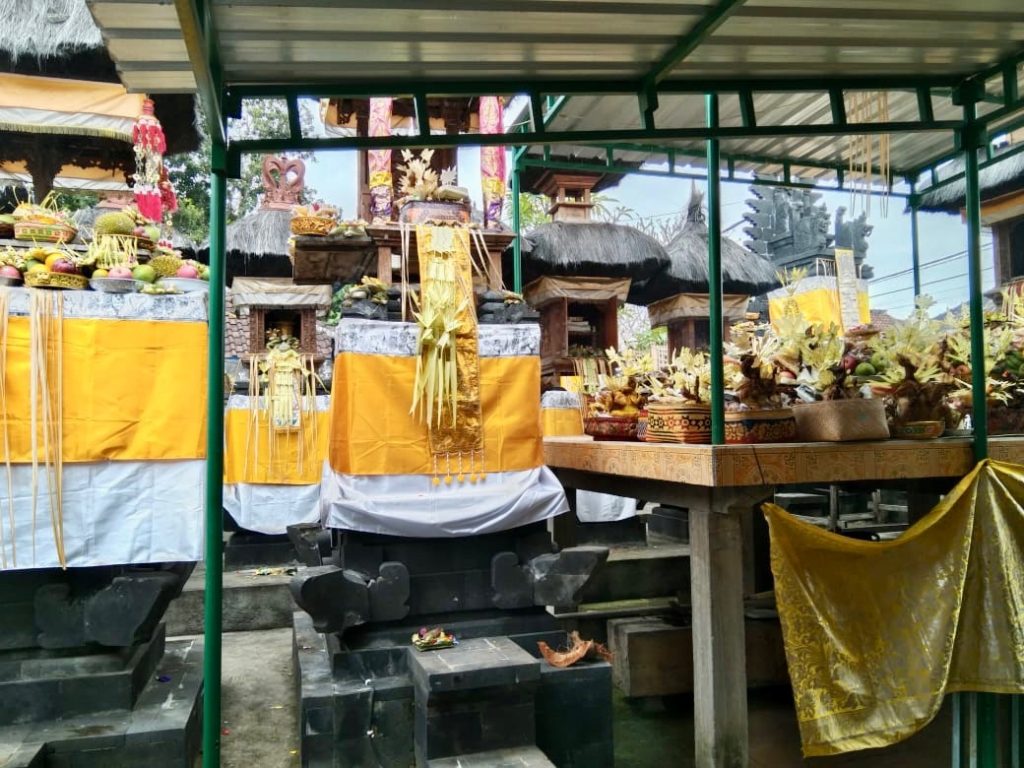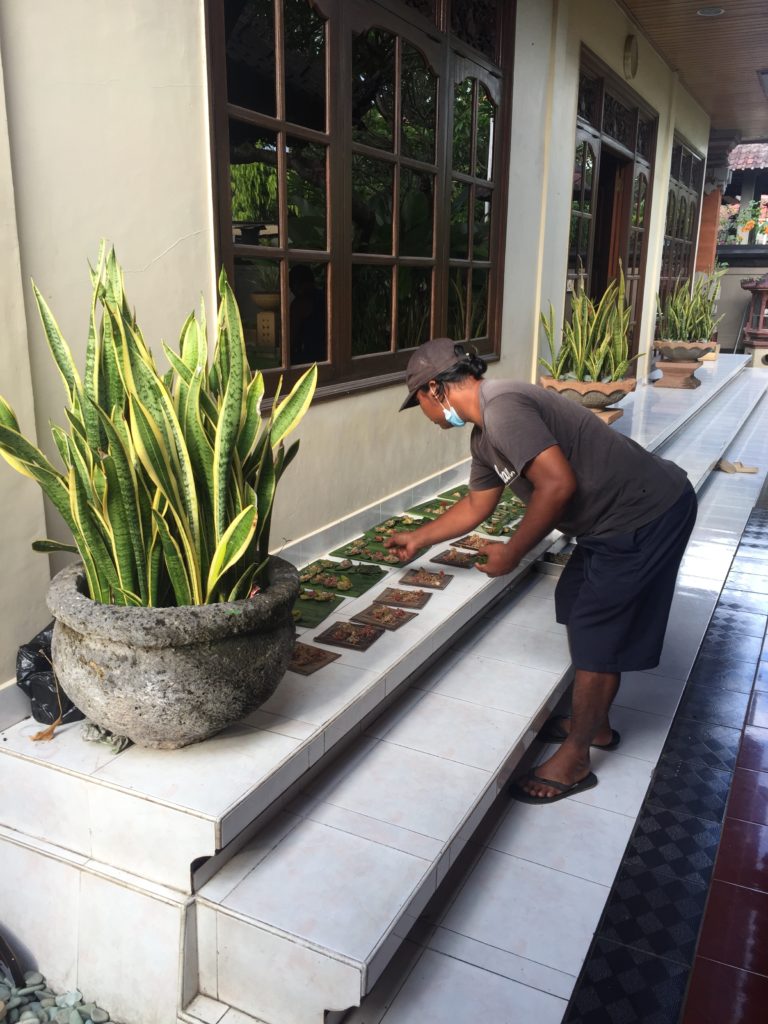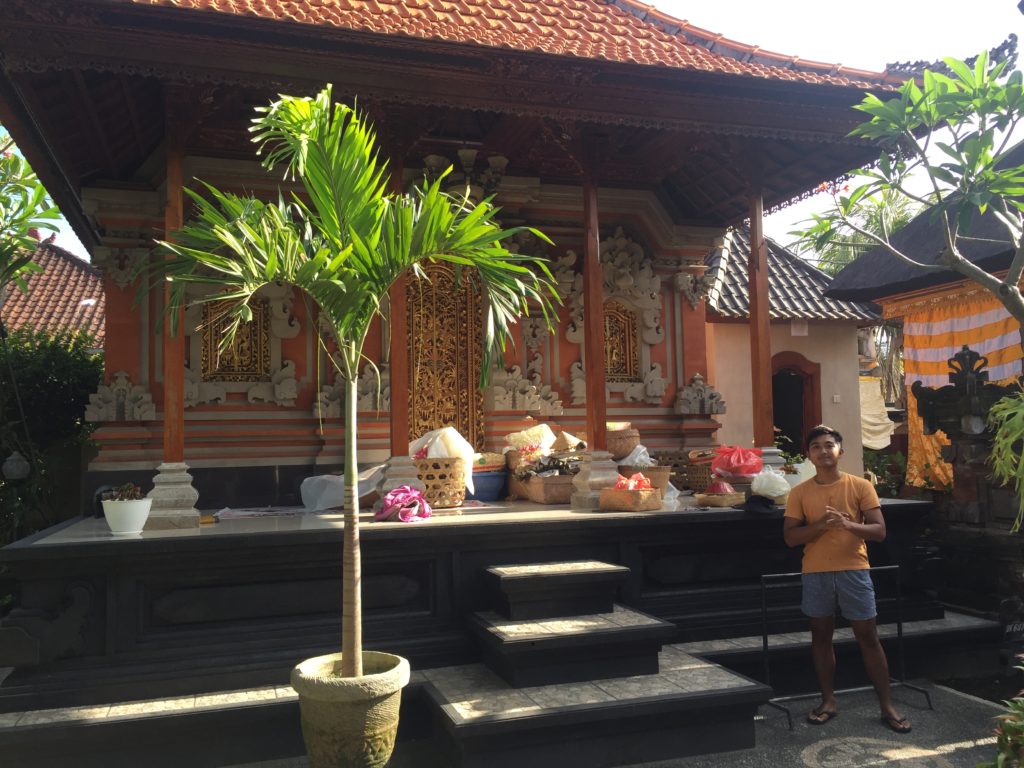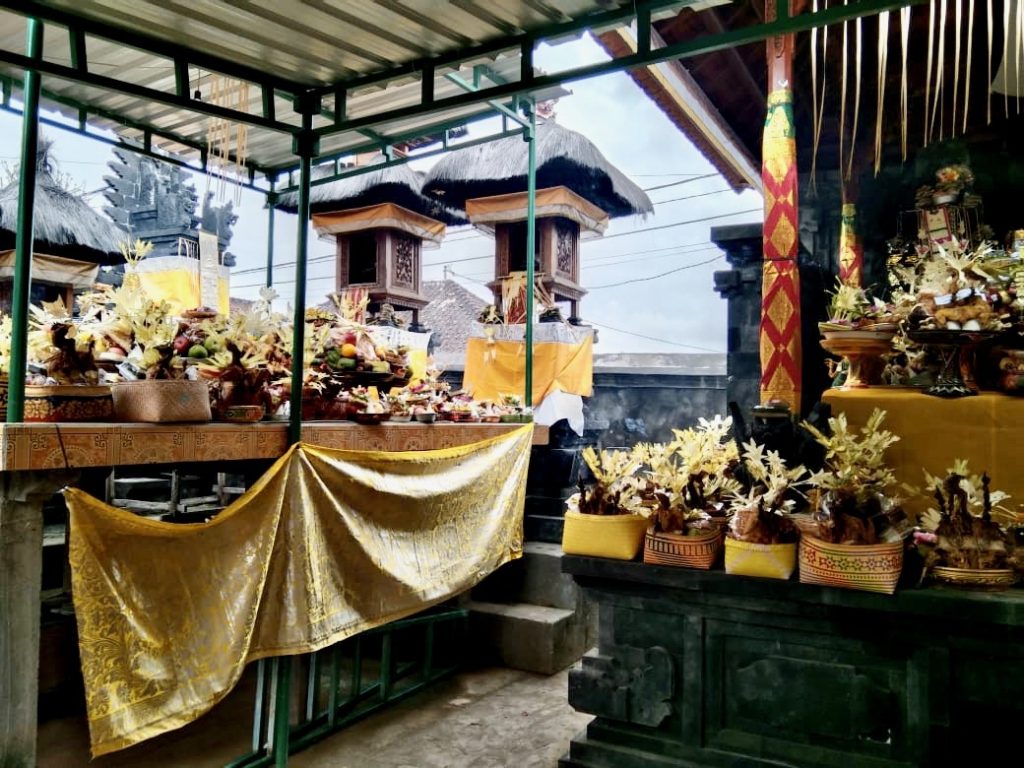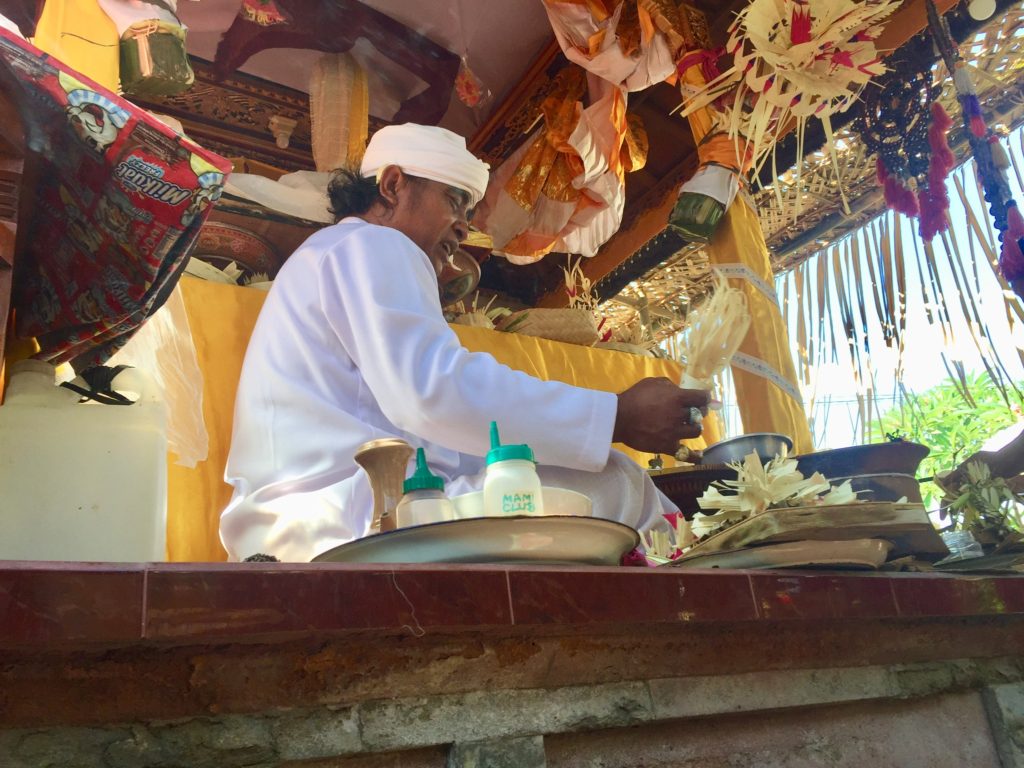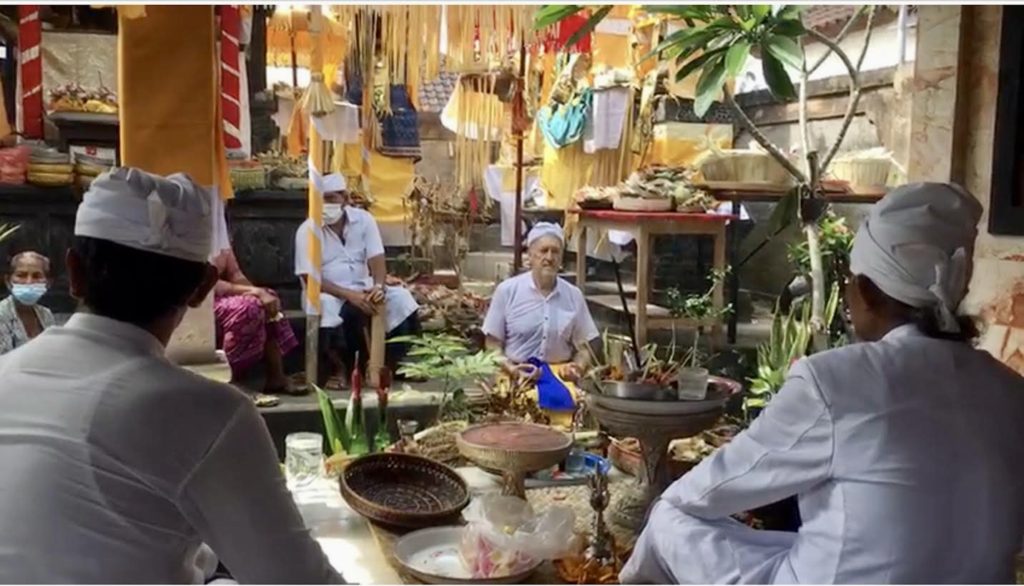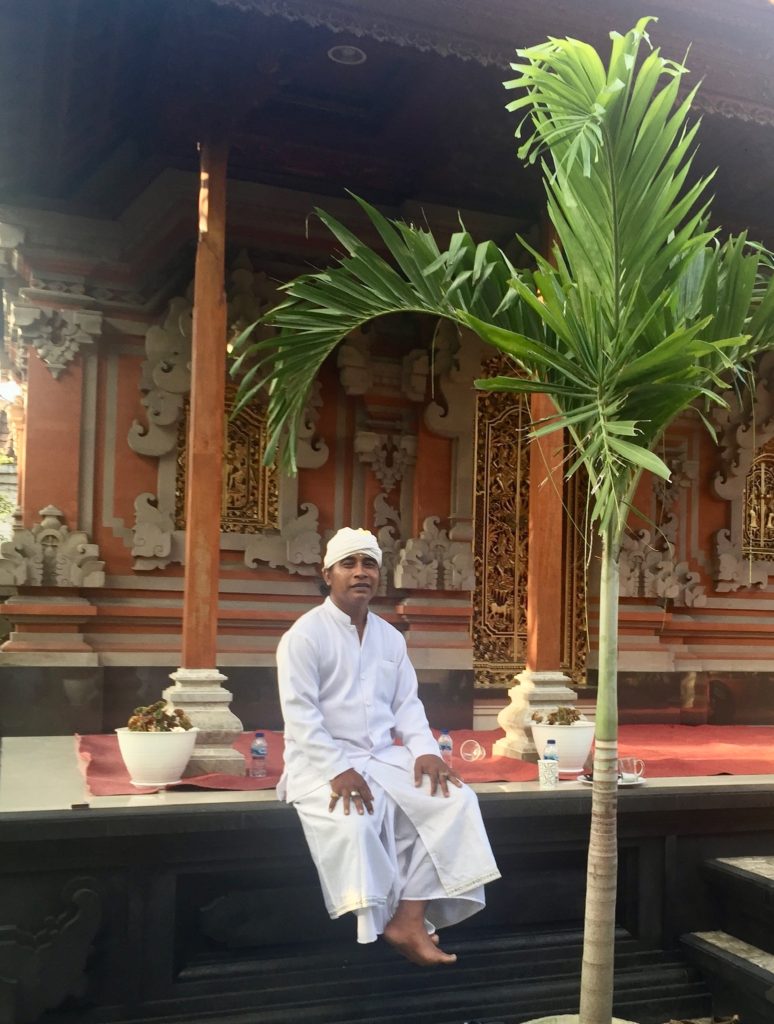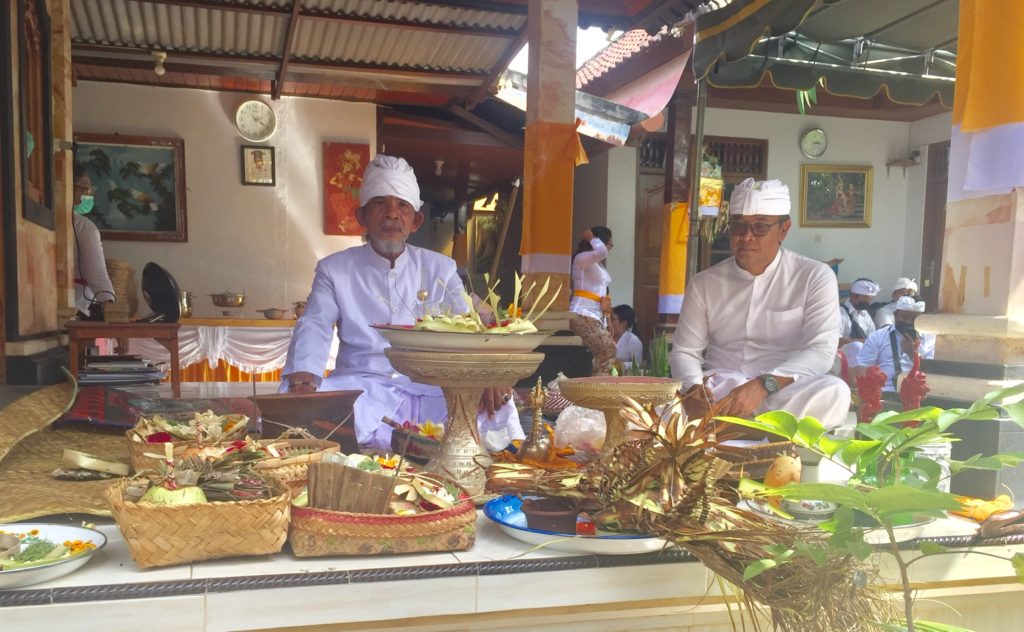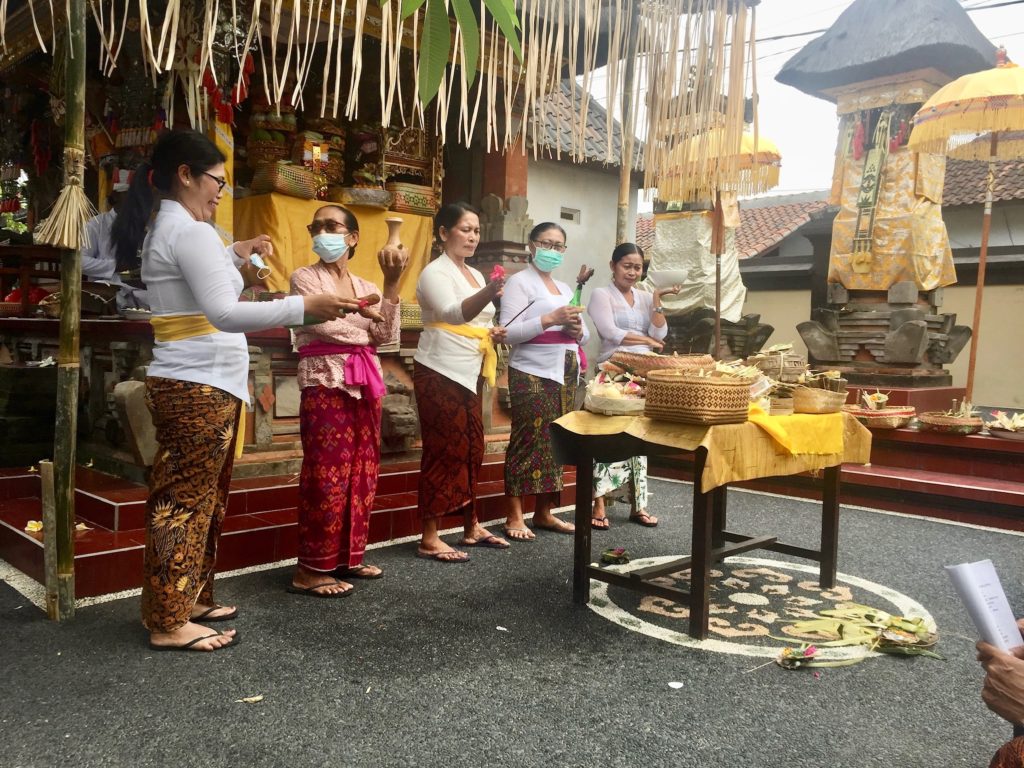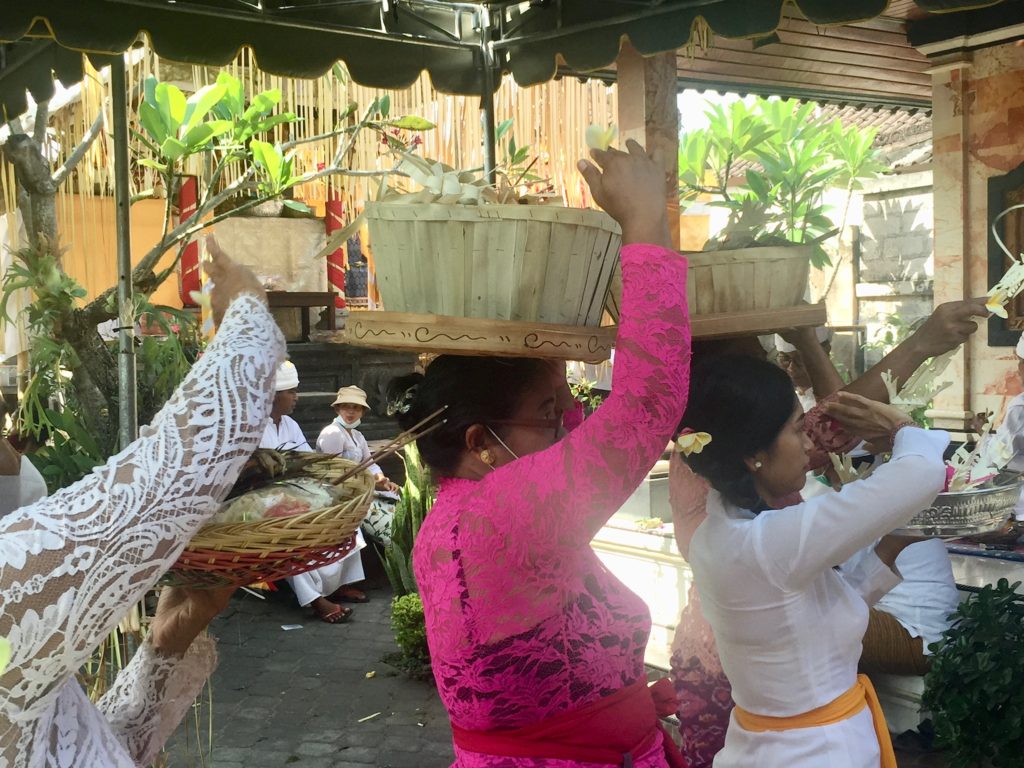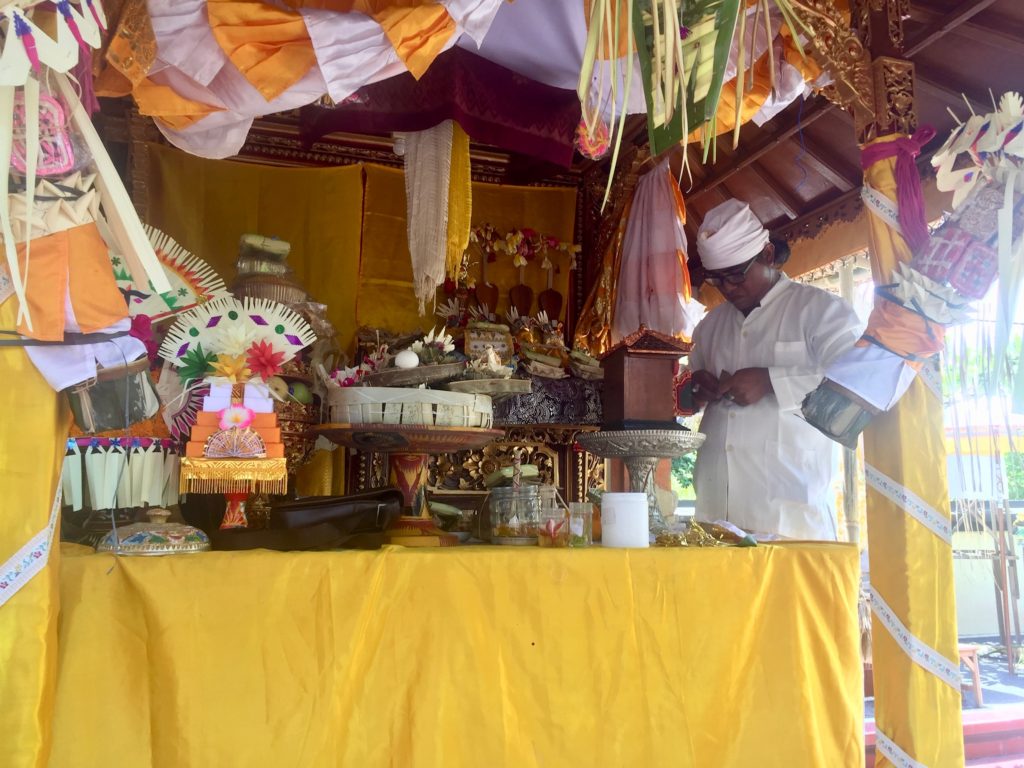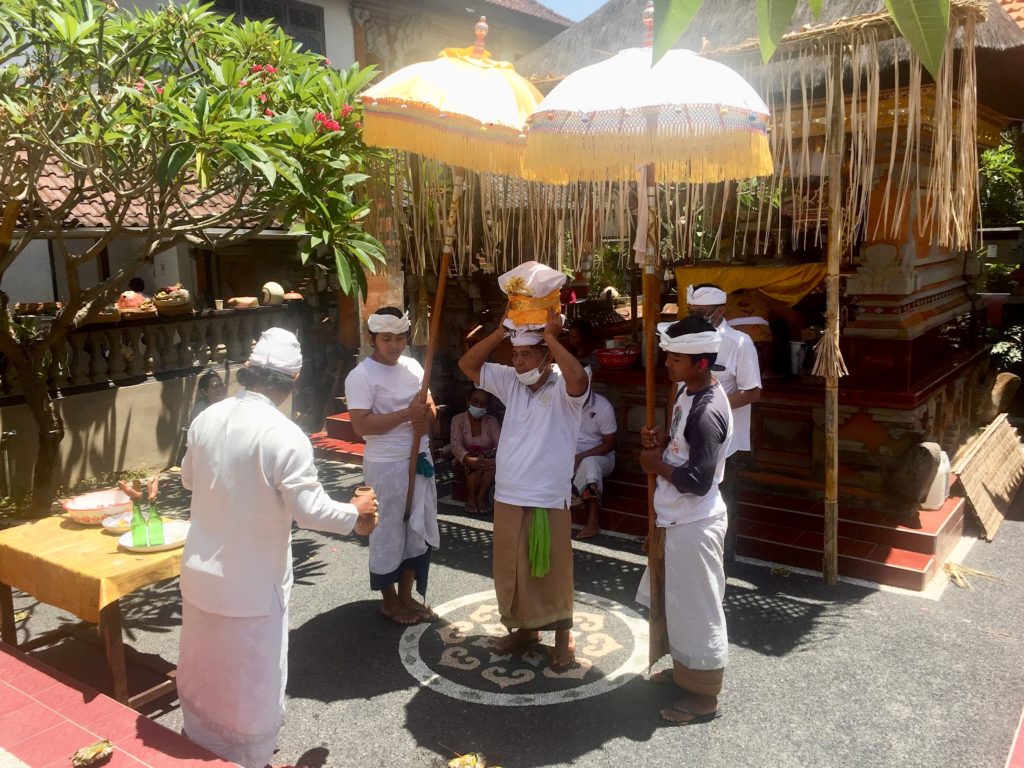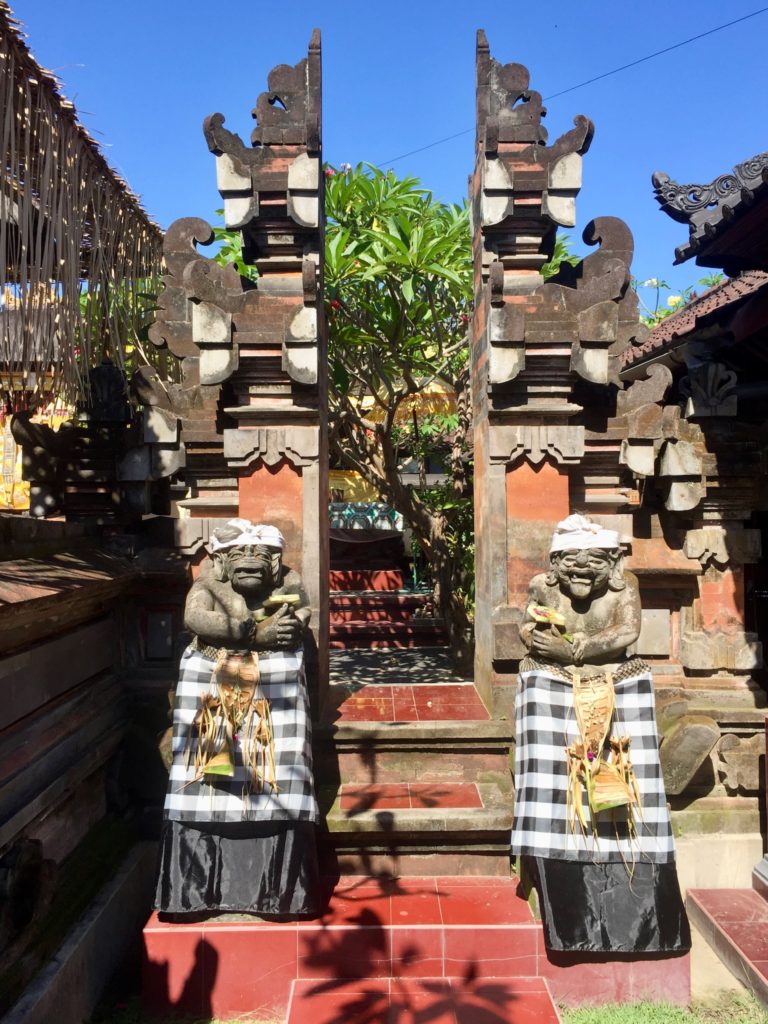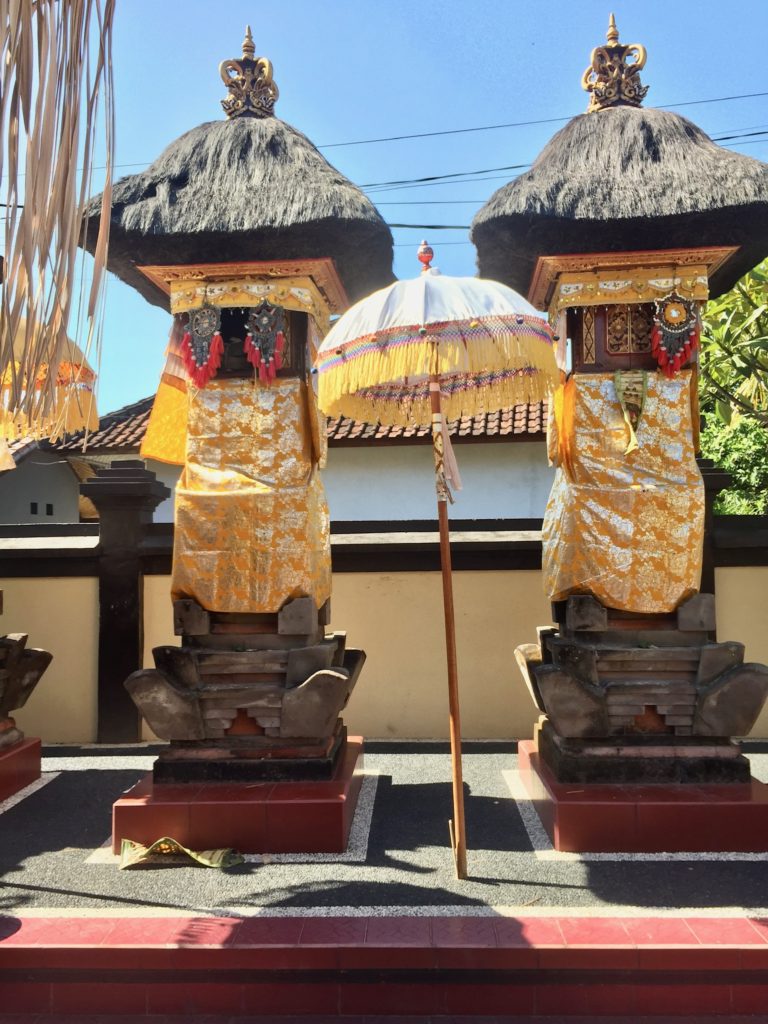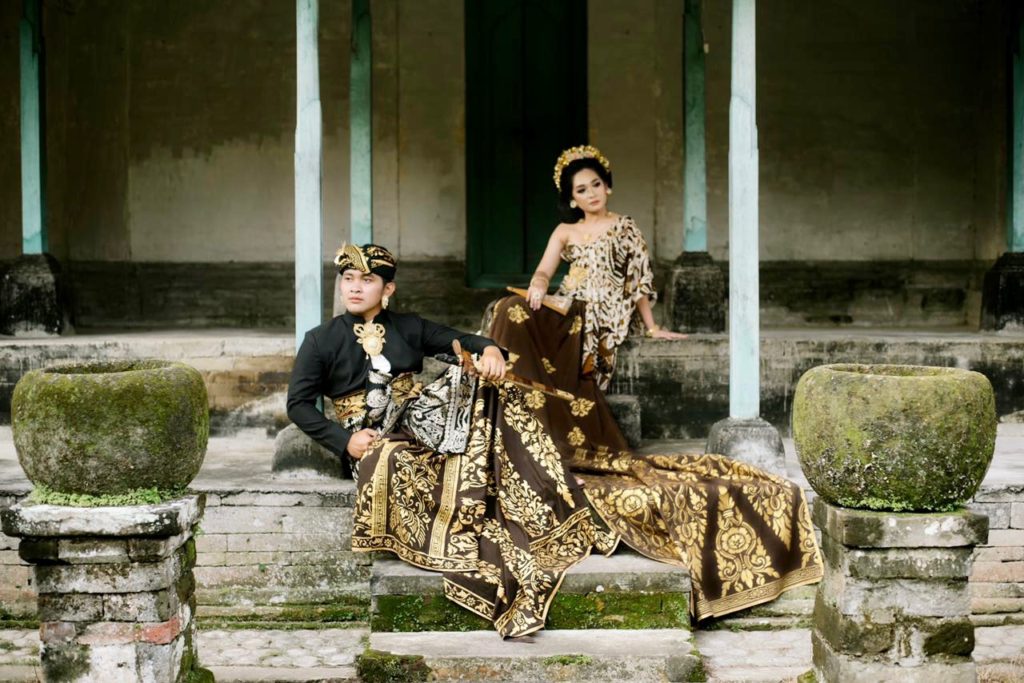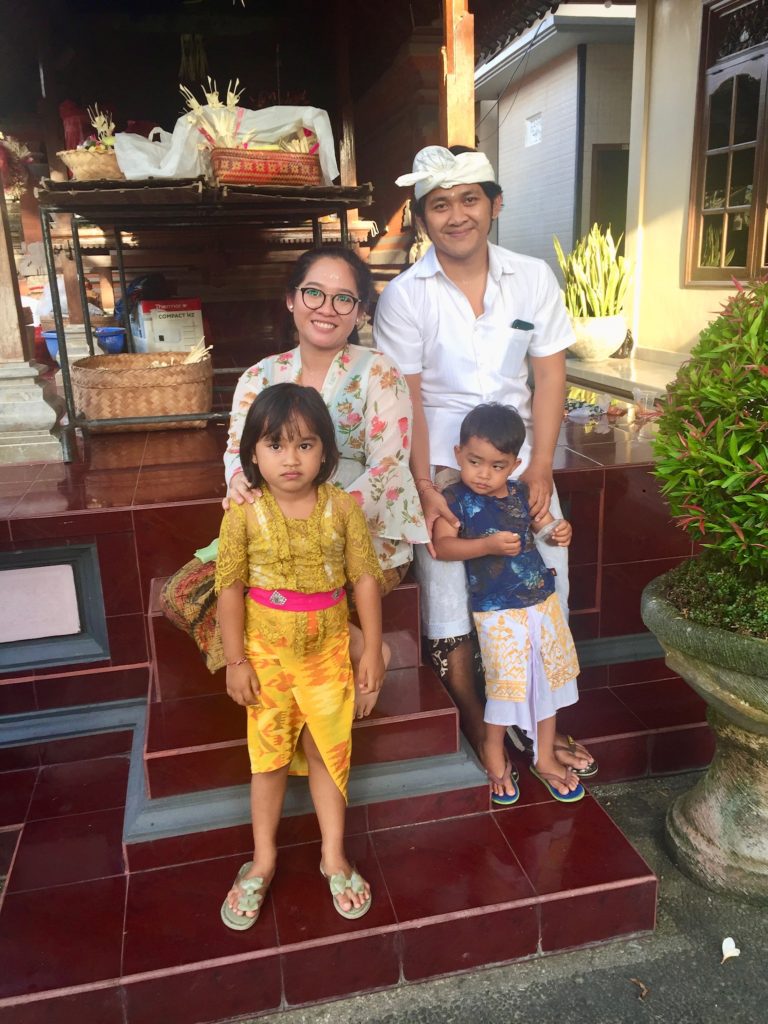Bali Hinduism has two main pivots: completeness and balance. These two elements are seen in all aspects of Bali life. For example, the completeness of the full moon reflects completeness of everyday life. Celebrating the full moon includes good harvest and abundance; the Balinese often plant their crops, especially fruit, on a full moon day
Naturally then, the full moon is fully celebrated in Bali with the Full Moon Ceremony, called Purnama (which means “perfect” in Balinese). It is believed that when the moon is brightest, Chandra the Moon God, gives his blessings through the lunar light. Each full moon is honored by the Balinese people by preparing offerings of fruit, food and flowers, visiting the local temple, reciting mantras and holy scriptures, as well as meeting in prayer, ritual and meditation.
Thus, the Full Moon Ceremony occurs once a month, but it seems to be a pulsating event — April and October are bigger celebrations. Some families have more expansive ceremonies while others are modest affairs. Yet, every family has its own special, huge moon fiesta once every five years. I was lucky enough to attend the “fully monty”, the five year ceremony of a local family, that of Made (Mah-day) Umariawan (good luck). The family of Made Umariawan have adopted me as a long-lost Brother. I am lucky to have such a great new family.
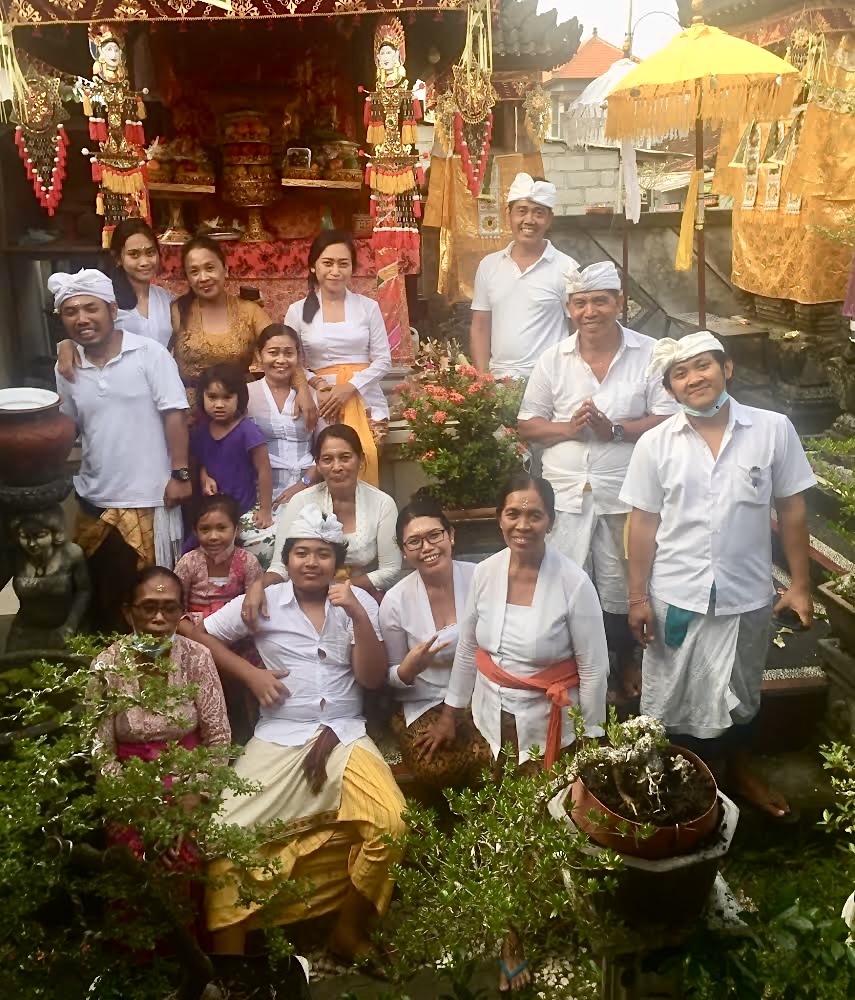
Dress for the Ceremony is Balinese formal — skirts (called sarongs) aprons covering the skirt, colorful waist sash, nice white shirt and ceremonial white hat — and that is just the dress code for the men!
The Ceremony really lasted three fulls days. This cycle included a day for each main segments:
Day One Below – A day of preparation, including housekeeping; cooking to stockpile prepared food; and spiritual cleansing rituals.
Day Two Below — A day of ceremonial cleansings, offerings, rituals, poems, prayers and promises — all under the guidance of Hindu Priests.
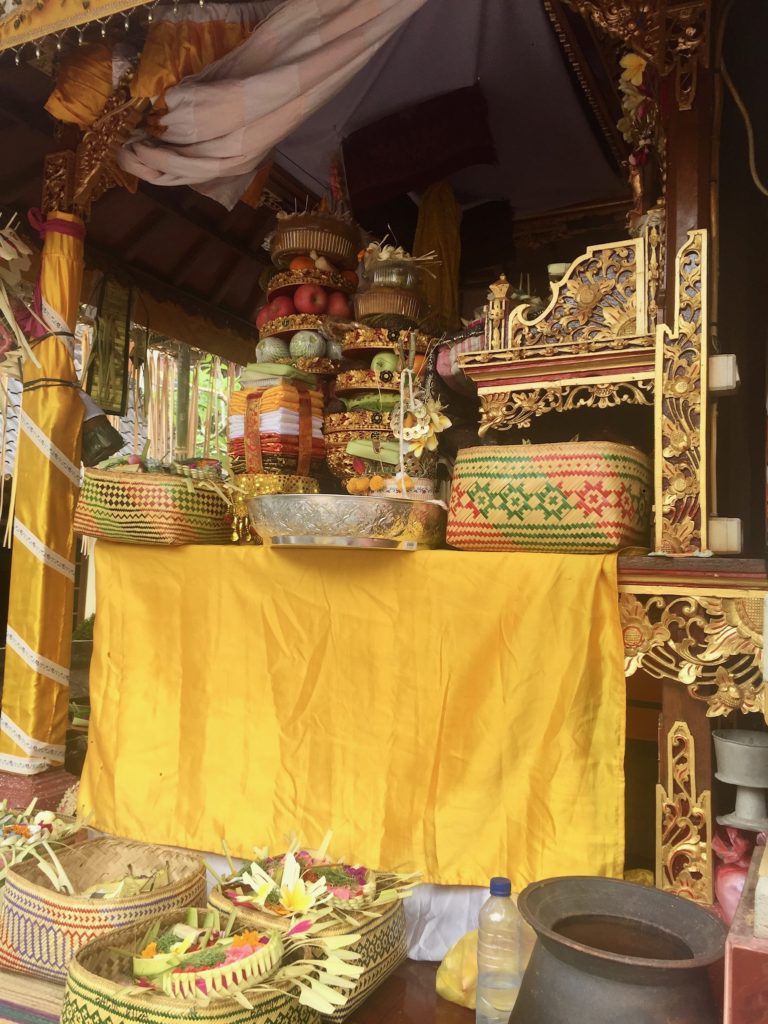
Day Three Below — A day of winding down, closing rituals and breaking camp. The closing rituals includes the critical ceremonial return of ancestral and sacred objects to their normal resting place.
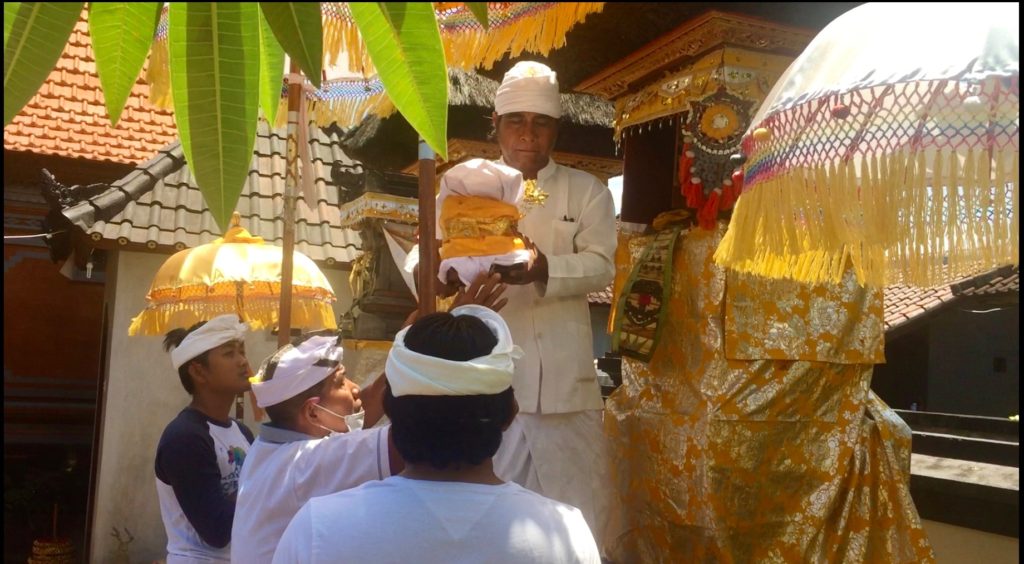
A Note on the Architecture
Every Bali Hindu home (and hotel) has a Temple, which could be any size, from a little bigger than a bread box to something Cathedralesque (is that a word?). A full temple consists of a minimum of three main parts plus auxiliary structures and compounds. Almost all of the photos in this blog are either from Made’s family Temple, or the Temple of a brother who lives nearby. These are not public Temples — just for use by the family and guests (like lucky me!)The Ceremony was a movable feast: We decamped to the brother’s house and had part of the Ceremony in his Temple. Here are two other touches in Made’s family Temple that lets one know what Bali = Beautiful and Bali = Sacred, all at the same time:
Bonus Photos:
Below are excellent pictures of my friends Edo and Ayu (Edo is Made’s oldest son.) On the left is their wedding photo from earlier this year. On the right is a photo of the couple at the Full Moon Ceremony, with two of their nephews and nieces:
